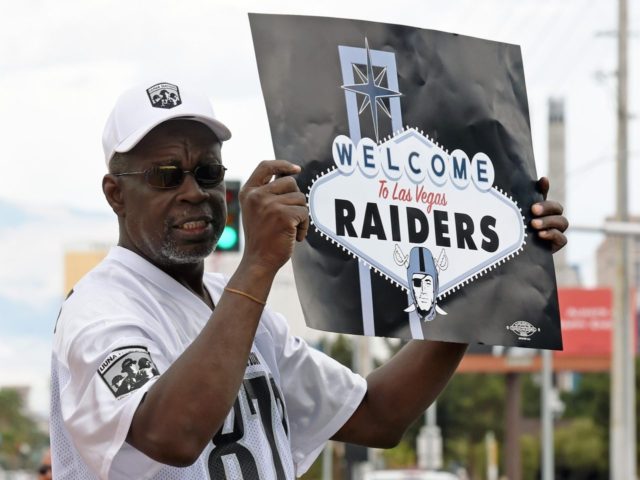The Las Vegas taxpayer subsidy to build a stadium for the National Football League Raiders works out to $354 per resident. The cost will be paid, according to projections, by increased tourist traffic that will drastically increase hotel occupancy and gambling tax collections during Sin City’s slowest nights and quietest season.
Critics are upset that Clark County committed $750 million in cash from local hotel transient occupancy tax (TOT) collection to underwrite part of the $1.7 billion for a 65,000-seat domed stadium that the NFL demanded before approving the Raiders’ move from Oakland to Vegas on March 27.
According to the Business Insider, local TOT would better be spent on expanding local government programs.
The Nevada Legislature in 1957 authorized Clark County to implement a 5 percent transient occupancy tax on hotel room charges to pay for the Las Vegas Convention and Visitor Authority’s marketing efforts to attract more tourists to casinos and hotels.
But TOT more than doubled to 12 percent, after big percentage increases in 1991 to fund public transportation and light rail projects. It rose again in 1997 to fund county public education capital projects. With an average daily room rate of about $108, Clark County TOT collections hit an all-time high in 2015, at $605.7 million.
The County Commissioners authorized another 1.38 percent TOT increase, effective January 15, to fund a large Las Vegas stadium and convention center expansion. Based on the Clark County TOT income stream, and coupled with a $650 million loan commitment from Bank of America, the NFL owners voted 31–1 on March 27 to approve Raiders team owner Mark Davis’ request to move the team to Las Vegas.
The Raiders will continue to play games in the Oakland coliseum during the 2017 through 2019 seasons, then begin play in Las Vegas when the stadium is opens in 2020.
Nevada estimated that for the Raiders’ 6 months of training, 16 seasonal games and 4 pre-season games, Clark County would experience 1.35 million extra room nights. That indicates 30 percent of the team’s audience would be from out-of-town, which would be highly unrealistic for any other city with an NFL team.
But due to its gambling attraction from the Las Vegas Strip, the Clark County hotel business environment is like no other city on the planet. The City of Las Vegas features a total of over 62,000 rooms, with 14 of the world’s top 25 largest hotels by room count.
From March through October, Las Vegas’s hotel utilization rate is 93 percent on weekends and 85 percent on weekdays, according to the About Travel blog. But during November through February, hotel utilization falls to 84 percent on weekends and 73 percent on weekdays. That means that Las Vegas has over 17,000 empty hotel rooms on during the Mondays, Thursdays and Sundays that the NFL hosts football games.
The NFL strictly avoided associating with Sin City for decades, because its casinos dominated legal sports betting. But Las Vegas now dominates the profitable and virally expanding fantasy sports gaming through its online presence and a series of seasonal conventions.
According to Sports Management, there were 56.8 million fantasy sports players in the U.S. and Canada in 2015. The top fantasy sport is football, with a 73 percent market share. About 19 percent of the U.S. population over 12-years-old play fantasy sports, and a staggering 30 percent of all teens play fantasy sports. Of the 18 hours of sports that fantasy players consume per week, over 9 are fantasy.
The NFL had total revenue of about $10 billion in 2015. But fantasy sports had $18.6 billion in revenue and a much higher growth rate. With numbers like those, Las Vegas could be great for the NFL, and the NFL will be great for Las Vegas.

COMMENTS
Please let us know if you're having issues with commenting.